-
About
- About Listly
- Community & Support
- Howto
- Chrome Extension
- Bookmarklet
- WordPress Plugin
- Listly Premium
- Privacy
- Terms
- DMCA Copyright
- © 2010-2025 Boomy Labs

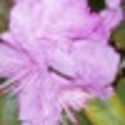 Marie Jones
Marie Jones
Listly by Marie Jones
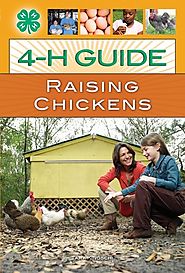
This easy-to-follow, illustrated guide introduces beginners to the basics of how to raise chickens. From selecting a breed to caring for chicks, from housing and fencing to feeding and preventing or treating illness, the guide presents simple, straightforward information about chickens of all kinds, raised for pets, eggs, or meat.
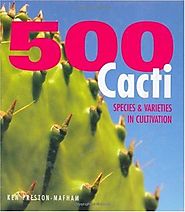
"A visual reference to 500 cacti."
The cactus family includes more than 2,500 species of cacti, succulents, caudiciforms and euphorbs. Native to the Americas, they are at least 50 million years old and highly advanced in their evolution. Not all are desert plants. Some are found in the rainforest, where they enjoy the heavy rainfall and grow much more vigorously than their desert cousins. Many cacti are very popular with rock gardeners and houseplant enthusiasts.
This new book features 500 species representing all cactus groups. The cacti are arranged alphabetically by scientific genus, with an entire page devoted to each species. At-a-glance information includes size, distribution, spination, flower and flowering time, plus varieties and synonyms used. Detailed descriptions reveal the amazing adaptations cacti have made, such as: Stems with waterproof skin to store water Far-reaching, shallow root systems Leaves that are shed during a drought Spines toward off predators.
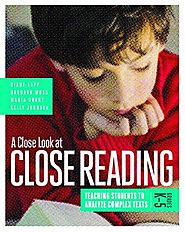
The Common Core State Standards have put close reading in the spotlight as never before. While elementary school teachers are certainly willing to teach students to closely read both literary and informational text, many are wondering what, exactly, this involves. Is there a process to follow? How is close reading different from guided reading or other common literacy practices? How do you prepare students to have their ability to analyze complex texts measured by Common Core assessments? Is it even possible for students in grades K 5 to read to learn when they re only just learning to read?
Literacy experts Diane Lapp, Barbara Moss, Maria Grant, and Kelly Johnson answer these questions and more as they explain how to teach young learners to be close readers and how to make close reading a habit of practice in the elementary classroom. Informed by the authors extensive field experience and enriched by dozens of real-life scenarios and downloadable tools and templates, this book explores text complexity and how to determine if a particular text is a right for your learning purposes and your students.
Equipping students with the tools and process of close reading sets them on the road to becoming analytical and critical thinkers and empowered and independent learners. In this comprehensive resource, you ll find everything you need to start their journey.
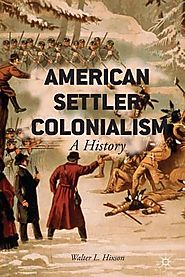
Over the course of three centuries, American settlers spread throughout North America and beyond, driving out indigenous populations to establish exclusive and permanent homelands of their own. In doing so, they helped to create the richest and most powerful nation in human history, even as they caused the death and displacement of millions of people. This groundbreaking historical synthesis demonstrates that the United States is and has always been fundamentally a settler colonial society - and, indeed, that its growth as a country represents the most sweeping, violent, and significant instance of the phenomenon in history. Linking episodes too often treated in isolation - including Indian removal, the Mexican and Civil Wars, and the settlement of Alaska and Hawaii - it upends many familiar categories of US history and presents a compelling yet disturbing framework through which to understand America's rise to global dominance.
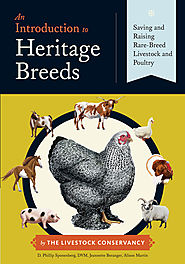
Heritage breeds matter, and they are often a better choice than conventional breeds for small farms and backyards. This eloquent, inviting, visual guide explains why conserving heritage breeds is important and shows you how you can raise these breeds yourself, helping to preserve them and benefiting from them at the same time. Written by three experts from the Livestock Conservancy, this book includes chickens, turkeys, ducks, geese, rabbits, pigs, sheep, goats, cattle, donkeys, and horses, detailing each breed's specific needs and characteristics so that you can select the one that's right for you. Whichever breed you choose, you'll find thorough, comprehensive information on how to raise it successfully.
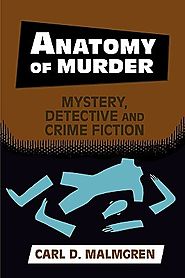
Anatomy of Murder identifies and explores three basic fictional forms dealing with murder and detection—mystery, detective, and crime fiction. Mystery fiction takes place in a centered world, one whose most distinctive characteristic is motivation. Covering the forms of murder fiction, the book examines texts by Doyle, Christie, Sayers, Hammett, Chandler, Highsmith, Jim Thompson, Thomas Harris, and others.
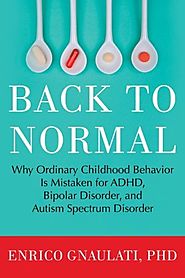
A veteran clinical psychologist exposes why doctors, teachers, and parents incorrectly diagnose healthy American children with serious psychiatric conditions.
In recent years there has been an alarming rise in the number of American children and youth assigned a mental health diagnosis. Current data from the Centers for Disease Control reveal a 41 percent increase in rates of ADHD diagnoses over the past decade and a forty-fold spike in bipolar disorder diagnoses. Similarly, diagnoses of autism spectrum disorder, once considered, has increased by 78 percent since 2002.
Dr. Enrico Gnaulati, a clinical psychologist specializing in childhood and adolescent therapy and assessment, has witnessed firsthand the push to diagnose these disorders in youngsters. Drawing both on his own clinical experience and on cutting-edge research, with Back to Normal he has written the definitive account of why our kids are being dramatically overdiagnosed—and how parents and professionals can distinguish between true psychiatric disorders and normal childhood reactions to stressful life situations.
Gnaulati begins with the complex web of factors that have led to our current crisis. These include questionable education and training practices that cloud mental health professionals’ ability to distinguish normal from abnormal behavior in children, monetary incentives favoring prescriptions, check-list diagnosing, and high-stakes testing in schools. We’ve also developed an increasingly casual attitude about labeling kids and putting them on psychiatric drugs.
So how do we differentiate between a child with, say, Asperger’s syndrome and a child who is simply introverted, brainy, and single-minded? As Gnaulati notes, many of the symptoms associated with these disorders are similar to everyday childhood behaviors. In the second half of the book Gnaulati tells detailed stories of wrongly diagnosed kids, providing parents and others with information about the developmental, temperamental, and environmentally driven symptoms that to a casual or untrained eye can mimic a psychiatric disorder. These stories also reveal how nonmedical interventions, whether in the therapist’s office or through changes made at home, can help children.
Back to Normal reminds us of the normalcy of children’s seemingly abnormal behavior. It will give parents of struggling children hope, perspective, and direction. And it will make everyone who deals with children question the changes in our society that have contributed to the astonishing increase in childhood psychiatric diagnoses.
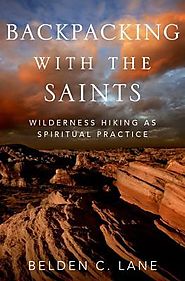
Carrying only basic camping equipment and a collection of the world's great spiritual writings, Belden C. Lane embarks on solitary spiritual treks through the Ozarks and across the American Southwest. For companions, he has only such teachers as Rumi, John of the Cross, Hildegard of Bingen, Dag Hammarskjld, and Thomas Merton, and as he walks, he engages their writings with the natural wonders he encounters--Bell Mountain Wilderness with Soren Kierkegaard, Moonshine Hollow with Thich Nhat Hanh--demonstrating how being alone in the wild opens a rare view onto one's interior landscape, and how the saints' writings reveal the divine in nature. The discipline of backpacking, Lane shows, is a metaphor for a spiritual journey. Just as the wilderness offered revelations to the early Desert Christians, backpacking hones crucial spiritual skills: paying attention, traveling light, practicing silence, and exercising wonder. Lane engages the practice not only with a wide range of spiritual writings--Celtic, Catholic, Protestant, Buddhist, Hindu, and Sufi Muslim--but with the fascination of other lovers of the backcountry, from John Muir and Ed Abbey to Bill Plotkin and Cheryl Strayed. In this intimate and down-to-earth narrative, backpacking is shown to be a spiritual practice that allows the discovery of God amidst the beauty and unexpected terrors of nature. Adoration, Lane suggests, is the most appropriate human response to what we cannot explain, but have nonetheless learned to love. An enchanting narrative for Christians of all denominations, Backpacking with the Saints is an inspiring exploration of how solitude, simplicity, and mindfulness are illuminated and encouraged by the discipline of backcountry wandering, and of how the wilderness itself becomes a way of knowing-an ecology of the soul.
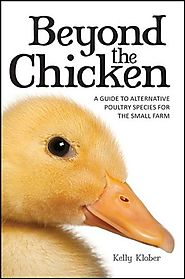
In this book, author and lifelong poultry keeper Kelly Klober turns his attention to alternative poultry ventures. The newfound interest in heritage breeds of chicken has created a unique opportunity for small farmers to reintroduce consumers to other types of poultry. Ducks, pigeons, and guinea were all once ubiquitous on the family farm, and the market is opening to them once again among influential chefs and foodies. From geese to quail to peahens to turkeys, Klober discusses the pros and cons of each and how to best fit an alternative poultry venture into your farming operation. Filled with humorous personal anecdotes and practical advice on feeding, housing, pricing and marketing, this book is a must-read for the small farmer interested in an alternative to the ever-present white egg-laying chicken or any lover of poultry

In 1994, Interface founder and chairman Ray Anderson set an audacious goal for his commercial carpet company: to take nothing from the earth that can't be replaced by the earth. In this remarkable book, Anderson leads the way forward and challenges all of us to share that goal.
The Interface story is a compelling one. Fifteen years after Anderson's initiative, Interface has:
-Cut greenhouse gas emissions by 94 percent
-Cut fossil fuel consumption by 60 percent
-Cut waste by 80 percent
-Cut water use by 80 percent
-Invented and patented new machines, materials, and manufacturing processes
-Increased sales by 66 percent, doubled earnings, and raised profit margins
Offering practical ideas and measurable outcomes that every business can use, Anderson shows that profit and sustainability are not mutually exclusive; we can improve our bottom lines and do right by the earth. Written with passion and an executive's hardheaded savvy, Business Lessons from a Radical Industrialist is the most inspiring business book of our time.
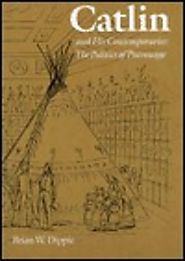
George Catlin's paintings and the vision behind them have become part of our understanding of a lost America. We see the Indian past through Catlin's eyes, imagine a younger, fresher land in his bright hues. But he spent only a few years in what he considered Indian country. The rest of his long life—more than thirty years—was devoted largely to promoting, repainting, and selling his collection—in short, to seeking patronage.Catlin and His Contemporaries examines how the preeminent painter of western Indians before the Civil War went about the business of making a living from his work. Catlin shared with such artists as Seth Eastman and John Mix Stanley a desire to preserve a visual record of a race seen as doomed and competed with them for federal assistance. In a young republic with little institutional and governmental support available, painters, writers, and scholars became rivals and sometimes bitter adversaries.
Brian W. Dippie untangles the complex web of interrelationships between artists, government officials, members of Congress, businessmen, antiquarians and literati, kings and queens, and the Indians themselves. In this history of the politics of patronage during the nineteenth century, luminaries like Henry Rowe Schoolcraft, Henry H. Sibley, John James Audubon, Alfred Jacob Miller, and Karl Bodmer are linked with Catlin in a contest for the support of the arts, setting a precedent for later generations. That the contenders "produced so much of enduring importance under such trying circumstances," Dippie observes,"was the sought-for miracle that had seemed to elude them in their lives."
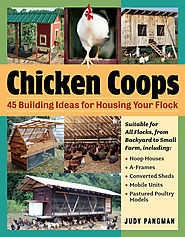
Easy-to-care-for, productive, inexpensive, and full of personality, chickens are popping up in backyards throughout the country—in the suburbs, rural towns, and even on city plots. All it takes to keep a small flock is a bit of land and a properly designed coop.
Just like houses, chicken coops come in all sizes and styles to meet the needs of any chicken family. Author Judy Pangman has combed the country identifying the top chicken coop designs, from utilitarian to high-style. The result is this ultimate collection of 45 building plans that are sure to meet the needs of any chicken owner.
The featured designs include basic easy-to assemble hoop houses, A-frames, and multi-storied wooden structures, as well as larger models for small commercial farms. There are also a variety of moveable coops that can be rotated around the yard, and low-budget coops constructed from found and repurposed materials.
Pangman shares inspirational and instructive stories about the participating coop designers/ builders. Enthusiastic communities of chicken-keepers have organized chicken tours in cities such as Seattle, highlighting the fun and fantastic imagination of some coop architect/builders. There are designs echoing the house styles of the neighborhood, as well as the most contemporary trends in architecture. Building a chicken coop offers a great outlet for any would-be architect who wants to stick to the miniature, scaled-down building!
A 16-page color section shows detailed photos of many of the featured coop plans, as well as some amazing kits and one-of-a-kind coops built from recyclables.
With its comprehensive building plans and chicken-laden stories, Chicken Coops is sure to inspire a sunny-side-up, no-yolks-barred attitude in all chicken owners who dream of building a bigger, better coop to house their flock.

A chicken tractor is a bottomless, portable pen that fits over your garden beds. Just set it wherever you need help in your garden. The chickens peck and scratch the soil to clean your beds, eat pest bugs and weed seeds. Best of all, they provide eggs and meat with that old-fashioned flavor. Chicken tractors have helped thousands of gardeners have better gardens and taken chickens out of factory farms and put them in the garden where they are your personal helpers.
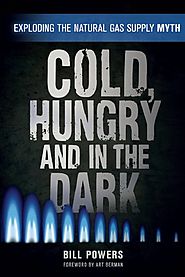
Conventional wisdom has North America entering a new era of energy abundance thanks to shale gas. But has industry been honest? Cold, Hungry and in the Dark argues that declining productivity combined with increasing demand will trigger a crisis that will cause prices to skyrocket, damage the economy, and have a profound impact on the lives of nearly every North American.
Relying on faulty science, bought-and-paid-for-white papers masquerading as independent research and "industry consultants," the "shale promoters" have vastly overstated the viable supply of shale gas resources for their own financial gain. This startling exposé, written by an industry insider, suggests that the stakes involved in the Enron scandal might seem like lunch money in comparison to the bursting of the natural gas bubble. Exhaustively researched and rigorously documented, Cold, Hungry and in the Dark:
Puts supply-and-demand trends under a microscope
Provides overwhelming evidence of the absurdity of the one hundred-year supply myth
Suggests numerous ways to mitigate the upcoming natural gas price spike
The mainstream media has told us that natural gas will be cheap and plentiful for decades, when nothing could be further from the truth. Forewarned is forearmed. Cold, Hungry and in the Dark is vital reading for anyone concerned about the inevitable economic impact of our uncertain energy future.
Bill Powers is the editor of Powers Energy Investor and sits on the board of directors of Calgary-based Arsenal Energy. He has devoted the last fifteen years to studying and analyzing the energy sector.
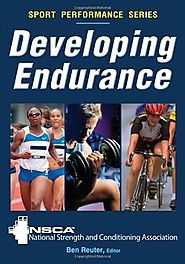
Runners, cyclists, swimmers, rowers, triathletes, and ultradistance athletes must sustain performance at a high level to come out on top. Developing Endurance shows how to achieve optimal stamina to race your best through science-based aerobic, anaerobic, and resistance training.
Written by 11 top experts in the National Strength and Conditioning Association, the top sport conditioning organization in the world, this guide provides both the background information and the exercises, drills, workouts, and programs for ultimate results. Athletes and coaches will appreciate the assessment tools, analyses, and instruction to define specific needs and establish effective training goals. Armed with these tools and information, you can create the ideal personalized training program for your sport and avoid lengthy plateaus while taking performance to the highest level.

The Romantic pianist - the solo pianist who plays nineteenth-century piano music - has become an attractive figure in the popular imagination, considering the innumerable artworks, literary works, and films representing this performer's seductive allure. Dreams of Love pursues a wide-ranging interdisciplinary approach to understanding the romantic pianist as a cultural icon, focusing on the role of technology in producing and perpetuating this mythology over the past two centuries. Sound recording and cinema have shaped the pianist's music and image since the early twentieth century, but these contemporary media technologies build upon practices established during the early nineteenth century: the influence of the piano keyboard on early telegraphs and typewriters, the invention of the solo recital alongside developments in photography, and the ways that piano design and the placement of the instrument on stage structure our viewing-listening perspectives. The concept of technology can be broadened to include the performance of gender and sexuality as further ways of making the pianist into an attractive cultural figure. The book's three sections deal with the touch, sights, and sounds of the Romantic pianist's playing as mediated through various forms of technology. Analyzing these persistent Liebestraume and exploring how they function can reveal their meaning for performers, audiences, and music lovers of the past and present too
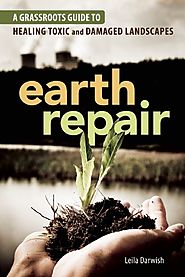
Millions of acres of land have been contaminated by pesticides, improperly handled chemicals, dirty energy projects, toxic waste, and other pollutants in the United States alone. This toxic legacy impacts the environment, our health, our watersheds, and land that could otherwise be used to grow healthy local food and medicines. Conventional clean-up techniques employed by government and industry are tremendously expensive and resource-intensive and can cause further damage. More and more communities find themselves increasingly unable to rely on those companies and governments who created the problems to step in and provide solutions.
Earth Repair describes a host of powerful grassroots bioremediation techniques, including:
Microbial remediation—using microorganisms to break down and bind contaminants
Phytoremediation—using plants to extract, bind, and transform toxins
Mycoremediation—using fungi to clean up contaminated soil and water
Packed with valuable, firsthand information from visionaries in the field, Earth Repair empowers communities and individuals to take action and heal contaminated and damaged land. Encompassing everything from remediating and regenerating abandoned city lots for urban farmers and gardeners to recovering from environmental disasters and industrial catastrophes such as oil spills and nuclear fallout, this fertile toolbox is essential reading for anyone who wishes to transform environmental despair into constructive action.
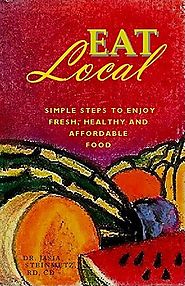
Eat Local Simple Steps: Your Online Guide to Enjoy Local Food!
Your step-by-step guide for finding, purchasing, cooking, and saving money with local food.
In Eat Local Simple Steps you will learn:
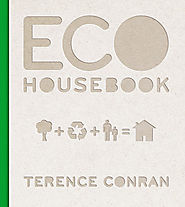
A complete guide to home improvement the environmentally friendly way: whether you want to redecorate or redesign your home, this essential book provides all the information you need to reduce your home's carbon footprint and improve the quality of your life.
For 40 years, Terence Conran has been a leader in intelligent design, changing the way we think about and furnish our homes. No, Conran shows us that it is possible to convert our existing homes into greener, healthier places without starting from scratch. Whether you want to redecorate or resign your home, Eco House Book explains how relatively small and economic changes can be made, including simple repairs to improve energy efficiency, water saving tips, and productive gardening, to more dramatic overhauls such as redesigning room use, converting basements and extending your home.
Environmental issues should be part of every decision you make on the home front--from selecting fabric for soft furnishings to designing and siting a home extension.
Special focus is given to reducing the vast amounts of energy and water that homes consume on a daily basis, with advice on low energy lighting strategies and decorative choices, improving insulation and reducing energy use, the latest green heating systems, alternative ways of generating power, and electricity reducing appliances. As we are urged to change our lifestyles to reduce our carbon footprint and consumption of water, there has never been a better time to green your home.

Use it up, wear it out, make it do, or do without—our grandmothers knew the importance of responsible, thrifty choices. But somewhere along the way we lost our way and succumbed to the belief that we can get everything for next to nothing, have it shipped halfway around the world and then, more often than not, just throw it away.
This consumer binge is taking its toll. Diet and lifestyle-related illnesses are epidemic, our environment is awash in a sea of plastic, our climate is changing, and the cost of everything is skyrocketing with the price of oil. Are we doomed? No. We can make greener, healthier choices, and we can do it while saving money.
Where to start? Ecofrugal is packed with simple, practical ideas and recipes. It is a must-read for anyone who has ever wanted to live a greener life but thought that it would be too expensive, time-consuming, or difficult, this handy, complete guide will show you how small changes can have a huge environmental impact and save you thousands of dollars, all while improving your quality of life.
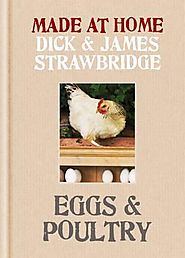
Eggs & Poultry is the perfect book for anyone intending to embrace the Good Life. Whether you have a large country garden or a small city enclosure, keeping a couple of hens is essential. What could be better than fresh eggs every day?
Everything you need to raise chickens, ducks, geese and turkeys for eggs and for eating is here. From housing to feeding and breeding,we???ve got it covered, alongside a closer peek at some of the more adventurous aspects such as seasonal turkey and green geese. Then, enjoy the fruits of your labours: perfect your poached eggs, enjoy smoked eggs with beetroot or pizza alla duck egg, try braised duck with peas or goose liver with cider and indulge in south-western fried chicken.
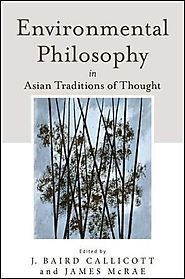
"Environmental Philosophy in Asian Traditions of Thought" provides a welcome sequel to the foundational volume in Asian environmental ethics "Nature in Asian Traditions of Thought." That volume, edited by J. Baird Callicott and Roger T. Ames and published in 1989, inaugurated comparative environmental ethics, adding Asian thought on the natural world to the developing field of environmental philosophy. This new book, edited by Callicott and James McRae, includes some of the best articles in environmental philosophy from the perspective of Asian thought written more recently, some of which appear in print for the first time.
Leading scholars draw from the Indian, Chinese, and Japanese traditions of thought to provide a normative ethical framework that can address the environmental challenges being faced in the twenty-first century. Hindu, Buddhist, Confucian, and Daoist approaches are considered along with those of Zen, Japanese Confucianism, and the contemporary philosophy of the Kyoto School. An investigation of environmental philosophy in these Asian traditions not only challenges Western assumptions, but also provides an understanding of Asian philosophy, religion, and culture that informs contemporary environmental law and policy.
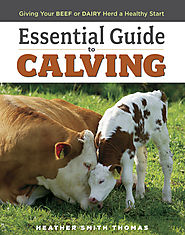
Every cattle farmer — from the keeper of a family milk cow to the rancher overseeing a large herd — will gain confidence and control by becoming more knowledgeable about calving. Healthy pregnancies, safe births, and thriving calves are critical to every cattle operation, and in remote farm locations, the veterinarian is not always readily available. Even if the vet is nearby, the farm's finances will be healthier if the farmer can oversee most of the calving process.
Heather Smith Thomas, an expert on livestock with decades of firsthand experience, covers every routine situation likely to arise before, during, and after calving. And when the calving process is out of the ordinary, Thomas guides the farmer through pregnancy problems, difficult deliveries, recognizing when to call in a vet, and postpartum complications. Her thorough coverage of what to expect in every situation gives farmers the knowledge they need to care personally for their cows.
The second half of the book is dedicated to ensuring that every calf gets off to a healthy start. Thomas helps farmers work with cows reluctant to nurse, substitute mothers, and frail calves. A complete chapter on calfhood illnesses explains warning signs and offers tips on prevention and treatment.
As people return to farming in growing numbers, the demand for safe, humane livestock knowledge continues to increase. Farmers will turn to this reliable volume again and again as they welcome each new calf.
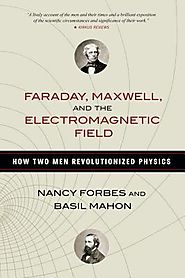
The story of two brilliant nineteenth-century scientists who discovered the electromagnetic field, laying the groundwork for the amazing technological and theoretical breakthroughs of the twentieth century.
Two of the boldest and most creative scientists of all time were Michael Faraday (1791-1867) and James Clerk Maxwell (1831-1879). This is the story of how these two men - separated in age by forty years - discovered the existence of the electromagnetic field and devised a radically new theory which overturned the strictly mechanical view of the world that had prevailed since Newton's time.
The authors, veteran science writers with special expertise in physics and engineering, have created a lively narrative that interweaves rich biographical detail from each man's life with clear explanations of their scientific accomplishments. Faraday was an autodidact, who overcame class prejudice and a lack of mathematical training to become renowned for his acute powers of experimental observation, technological skills, and prodigious scientific imagination. James Clerk Maxwell was highly regarded as one of the most brilliant mathematical physicists of the age. He made an enormous number of advances in his own right. But when he translated Faraday's ideas into mathematical language, thus creating field theory, this unified framework of electricity, magnetism and light became the basis for much of later, 20th-century physics.
Faraday's and Maxwell's collaborative efforts gave rise to many of the technological innovations we take for granted today - from electric power generation to television, and much more. Told with panache, warmth, and clarity, this captivating story of their greatest work - in which each played an equal part - and their inspiring lives will bring new appreciation to these giants of science.
